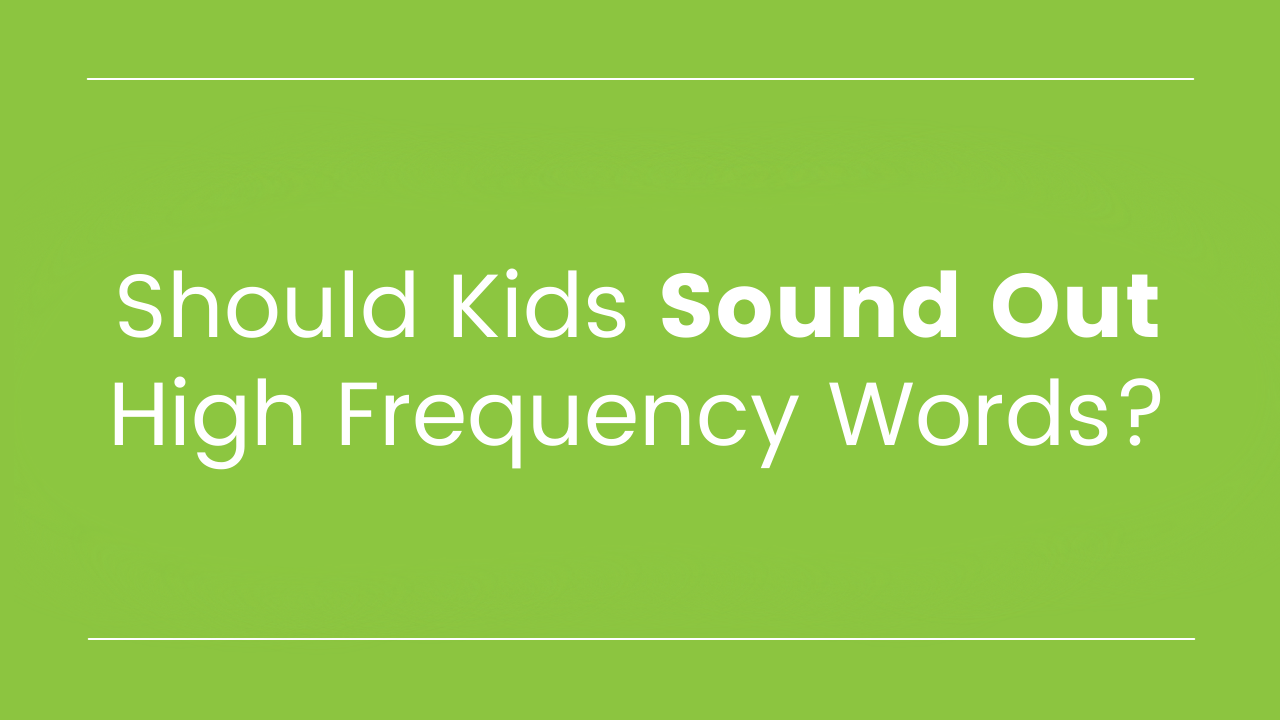
Should Kids Sound Out High Frequency Words?
For years, teachers have been taught to have students treat high frequency words (which you may know as "sight words") differently than "other" words. While students were encouraged to sound out certain words, they were not encouraged to sound out high frequency words. The idea was that students should try to "memorize" the words (essentially, rely on what high frequency words look like visually) so that they could read them rapidly.
However, this strategy is not what research shows to be most effective for getting kids to learn and retain high frequency words! In this post, we'll break down why that is, what to do instead, and address the question of if kids should sound out high frequency words.
What Are High Frequency Words?
High frequency words are words that appear frequently in texts. Word lists like the Dolch or Fry were created by literally counting up words in beginning books and listing out the words that appeared most frequently.
High frequency words can be regularly spelled, meaning that they follow typical English spelling patterns (like "can" or "like"). They can also be irregularly spelled, meaning there is at least one sound or spelling pattern that breaks typical English spelling rules (like "four" or "would").
What About Sight Words?
Sight words are words that a reader knows instantly, by sight. When students learn high frequency words - or any words, for that matter - very well, they become sight words. This happens through a process called orthographic mapping.
Every child (and adult!) has a different "bank" of sight words that they know.
What Does The Research Say About Teaching High Frequency Words?
Here are some important things to know:
-
“McGeown, Medford, and Moxon (2013) found that students with good phonic decoding skills took a more phonemic approach to sounding out irregular words than those who…relied more on the overall look of the word. Those approaching irregular words phonically were more successful at reading them correctly than those who used the more “visual” approach.” (Kilpatrick, 2015)
- Many struggling readers rely on the front side of the brain to read whole words by sight - and it's less effective.
- Effective high frequency word instruction involves activating parts of students' brains that deal with the meaning of the word, the sounds in the word, and the spelling of the word.
What Does This Mean For Teachers?
This means that instruction should not focus solely on what a word "looks" like! We want to help students understand how to use the word, and we want to help them make connections between the sounds in the word and the spelling of the word - both for regularly and irregularly spelled high frequency words.
To see what this looks like in practice, check out this video:
Last but not least, let's address the question: Should kids sound out high frequency words?
The answer is YES - while they are learning them! Of course, the goal is for kids to begin reading these words automatically. But this happens through time and practice, which involves kids sounding out high frequency words at first.




